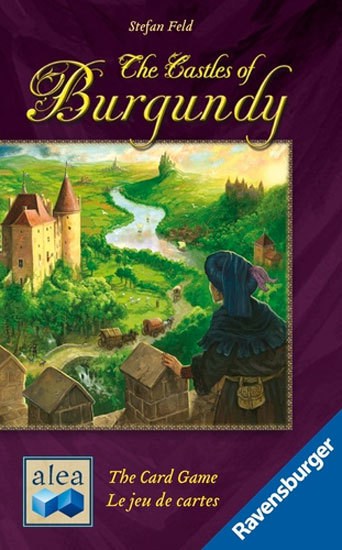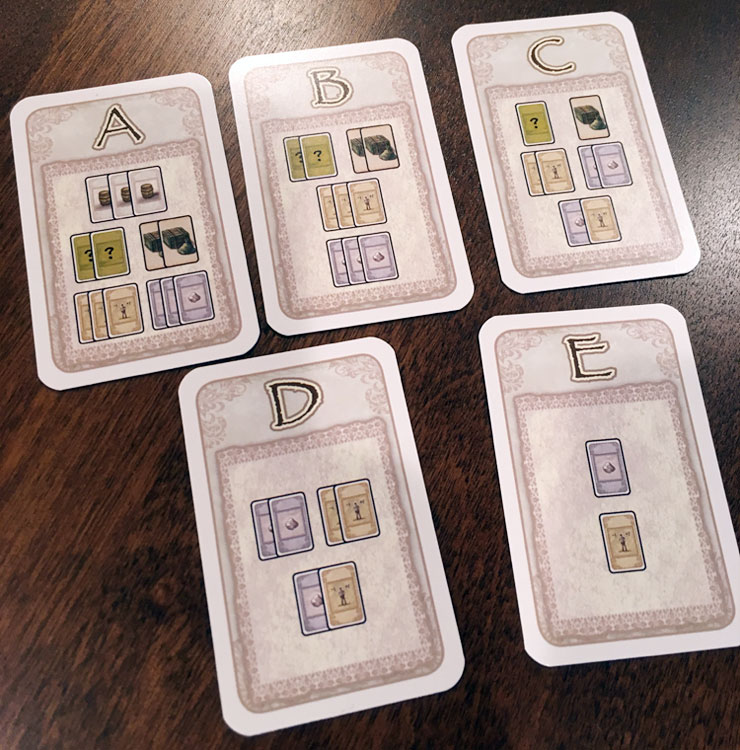 In the automobile industry, tailoring a car’s niche in the marketplace takes a lot of effort. Engineers and marketers work hand-in-hand to make sure the lineup of a company’s vehicles fits many different types of buyers. It shouldn’t come as a surprise that board game publishers do the same thing. Either the company’s overall game lineup appeals to a certain subset of game buyers or the company tries to offer a variety of games to satiate a variety of game situations and buyer personas. With this in mind, Ravensburgers’ new title aims to find its place in the market.
In the automobile industry, tailoring a car’s niche in the marketplace takes a lot of effort. Engineers and marketers work hand-in-hand to make sure the lineup of a company’s vehicles fits many different types of buyers. It shouldn’t come as a surprise that board game publishers do the same thing. Either the company’s overall game lineup appeals to a certain subset of game buyers or the company tries to offer a variety of games to satiate a variety of game situations and buyer personas. With this in mind, Ravensburgers’ new title aims to find its place in the market.
The Castles of Burgundy: The Card Game is a hand management and set collection card game for 1-4 players. It takes about one hour to play. It plays best with 3 or 4 players.
Game Overview:
Based on The Castles of Burgundy, the card game of the same name has players as lords of lands in renaissance France. Their goal is the expanding of their estates through the construction of buildings, creating farms, mining, shipping goods, and constructing castles. This is accomplished through the playing of cards to form sets and using cards with dice symbols as virtual dice. The player who earns the most points from this variety of activities wins.
Game Components:

The entire game is comprised of mini European sized cards which represent various resources in the game. Almost all of this art is lifted straight from The Castles of Burgundy. The card quality is fine, but the cards are otherwise unremarkable.
The rulebook is sufficient but what is woefully lacking in the game is a reference card for the actions available to players. There are six different actions and committing these all to memory takes a couple of plays. It would also have been nice to have a reference card for some of the building bonuses, as these are hard to decipher at times.
How to Play:
Each of the main cards in the game has a dual purpose function. They act as a die value as indicated at the top and they serve as an estate type. These will be called estate cards in this review as the rules label these cards depending on their function.
After setup of an estate card display, players receive decks of six estate cards. These are drawn so that players always have two in hand. When in your hand, the die symbols on the estate cards are important, nothing else. These virtual dice are used when taking actions in the game.
Players will be attempting to use these dice to move estate cards from the shared display into their project area and then again into their estates. Other examples of actions requiring dice are acquiring workers to make dice adjustments and selling goods to acquire Silverlings (a form of money from The Castles of Burgundy).
Much of the action is similar to The Castles of Burgundy and those players familiar with that game will recognize play immediately. The main source of points is from “triples” of estate cards of matching colors. Players can also receive points from sets of farm animals, shipped goods, and being the first to acquire certain sets of estates.
The full ruleset is somewhat complex. For the full rules, a PDF is available on Ravensburger’s site.

Game Experience:
Whether a product succeeds in the marketplace depends largely on the demand for the variables that it brings. Ravensburger aims to have the card game version of a beloved board game reinvigorate interest in the parent game and also help find new players through a shorter play time and lower price point. The Castles of Burgundy: The Card Game succeeds in all respects. However, that’s where the interest ends for experienced players.

A shorter game means that trepidatious players can get a sense for how the parent game plays in about half the time. If players have never experienced a Stefan Feld design and have held off playing for what looks to be a dry game, this is the title to seek out. It feels very much the same as the board game.
The lower price point only adds to this. Players wishing to only spend half their money on a product to get the same feeling as The Castles of Burgundy may want to seek this out first. As of this writing, the card game is half the price of the board game. If spending the extra $13 is a decision point for players, they’re well served by the card game product. It feels very much the same as the board game.
For those players who love the board game and are looking to expand into a game with the same style but with new options, look elsewhere. The card game really has no substantive original gameplay and covers no new ground as far as card games are concerned. However, players looking for a solo option to The Castles of Burgundy might find some interest as solitaire rules are included. In either case, the lack of substance means the card game feels very much the same as the board game.
Final Thoughts:

The card game version of The Castles of Burgundy is shorter. It is more compact for travel but not more compact on the table. It gives the same flavor as the parent game without a board. If that entices players, then that’s enough but not for this reviewer.
For the price point, The Castles of Burgundy: The Card Game is a good purchase and a good game, but there is no reason to purchase if players have no difficulty in getting The Castles of Burgundy to the table. It serves as either a budget of money product or a budget of time product, not an adaptation of game product. It’s good, but not remarkable in any other sense.
If you’d like to pick up a copy of The Castles of Burgundy: The Card Game, you can get it for about $14.
Final Score: 3 Stars – Players low on time, money, or looking for solitaire play will appreciate this compact version of a much beloved parent game. Others need not consider the purchase.
 Hits:
Hits:
• Compact
• Short play time
• Engaging card play
• Price
Misses:
• Unoriginal gameplay
• Board game offers more strategy






















